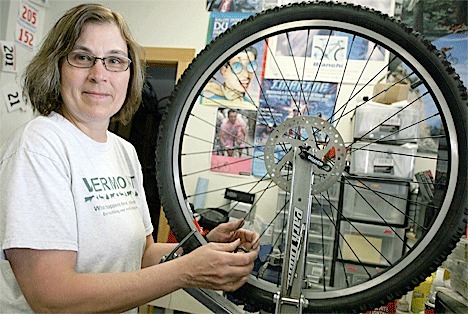For the third year in a row, Washington was named “Most Bicycle Friendly State” by the League of American Bicyclists.
But Barbara Culp, executive director of the Bicycle Alliance of Washington, questions the Washington State Department of Transportation’s decision to install rumble strips along Highway 20 and 525 on Whidbey Island.
“So why would a state that received that award install rumble strips on a premier bike route?” she said.
She’d also like to know if WSDOT collected data proving there really is enough run-off-the-road accidents along the scenic byway to justify the installation of the strips.
Dave Chesson, WSDOT spokesman for this region, said the analysis of run-off-the-road collisions from 2003 through 2007 included a total of 302 collisions involving 309 vehicles, with four fatalities, 12 disabling injuries, 54 evident injuries and 50 possible injuries on Highway 20 from mile post 12.88 near the Keystone Ferry to mile post 59.95 in Burlington.
On Highway 525, covering Central and South Whidbey, there were 53 collisions involving 53 vehicles, one disabling injury, nine evident injuries and nine possible injuries.
“There are 94 miles of shoulder on the island and WSDOT put in 17 miles of rumble strips,” Chesson said. The 17-mile figure doesn’t include the gaps, each approximately 12-feet-long, between each 28-foot-long rumble strip. “We wanted to install more rumble strips than we did, but we cut it down to the bare bones,” Chesson said.
Still, bicyclists such as Culp aren’t happy about the project.
“I was furious about the rumble strips,” she said as took a short break from her Bellingham to Seattle ride while aboard the Clinton/ Mukilteo ferry Memorial Day weekend. “As soon as I get into the office I’m going to ask them to put a moratorium on rumble strips.”
The strips won’t keep cyclists from riding up and down the island, she said, but the automobile “safety feature” makes it unsafe for cyclists.
Chesson countered that “WSDOT works hard to balance the need of bicyclists with the tens of thousands of vehicles that drive the island everyday in the rain, snow and wind.”
Avid Oak Harbor cyclist Ron Rhinehart said his concerns are two-fold. One, the rumble strips reduce the rideable area on the shoulder. The space left is more prone to debris because it’s farther from the fog line where the force of passing cars often clear rocks, glass and litter from the pavement.
“The area near the fog line is often the cleanest part because the wind force from the tires blows debris off to the side,” he said. “When you put the rumble trips on the cleanest part, the available good, clean riding space is a fraction of what it used to be.”
Secondly, the rumble strips make it more difficult to navigate around obstacles such as slower cyclists, disabled cars, dead animals and glass. In order to pass, cyclists first need to identify an obstruction, find a break in the rumble strip pattern and look for a break in traffic while traveling at 25 miles an hour, he said.
While Rhinehart conceded that “no design is going to make everyone happy,” he’d like WSDOT to stick with its rumble strip guidelines of 28-foot-strips with 12-foot breaks and 4-foot shoulders.
Chesson blamed the equipment for some variation in the rumble strip pattern, especially on curved areas of roadway where the rideable shoulder may be “five or six inches off.”
He added that federal and state guidelines call for 10- to 14-foot gaps. Still, Culp asserts, “The gaps in the pattern were cut too short.” She and riding partner Goulding measured the strips in several locations and found the features didn’t meet WSDOT standards.
But Chesson doesn’t agree with Culp’s findings. “We’ve done a lot of measuring and to say they were installed incorrectly is untrue,” he said. The shortest gap found by WSDOT inspectors and engineers was 10-feet, seven-inches.
Darcie Patterson of Bicycles Northwest, which has been located in the Safeway shopping Center for the last decade, said she randomly stopped to measure one gap. It was 10-feet, she said.
Patterson understands the need for rumble strips, but she’s not happy with the ones installed on Whidbey Island. “I don’t oppose them, but there could have been a little more thought put into it,” she said, adding that she didn’t know WSDOT had installed the strips until her husband called her while he was out on a ride. “I was just surprised that Whidbey Island bicyclists weren’t contacted.”
Chesson said WSDOT has done extensive outreach to develop its rumble strip standards, but that Whidbey cyclists weren’t contacted because there was no central bike club and an “incredibly tight” budget restricted the amount of outreach they could do. Although there was no bike club at the time, Patterson said she would have been more than happy to connect them with the cycling community. She’s been in Oak Harbor 10 years, after all.
Now there’s a newly formed club called Whidbey Island Bicycle Club. “I just hope the next time that they do it differently,” she said.
As for the rumble strips, cyclist won’t have to worry about the situation getting any worse in the near future.
“We’re not calling for any more at this time,” Chesson said.



